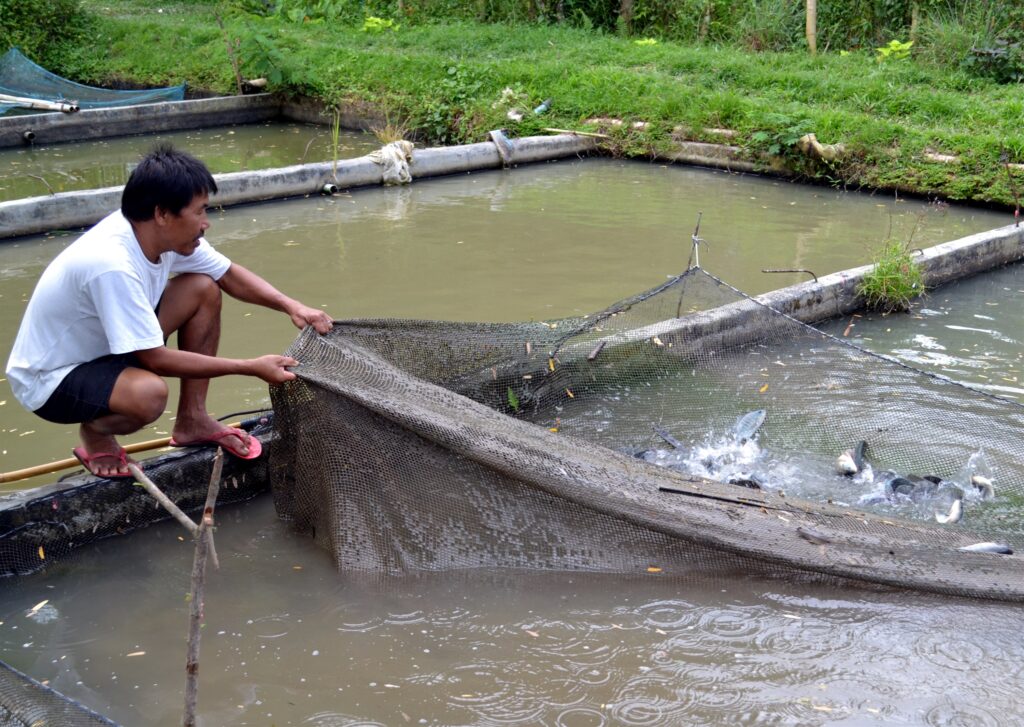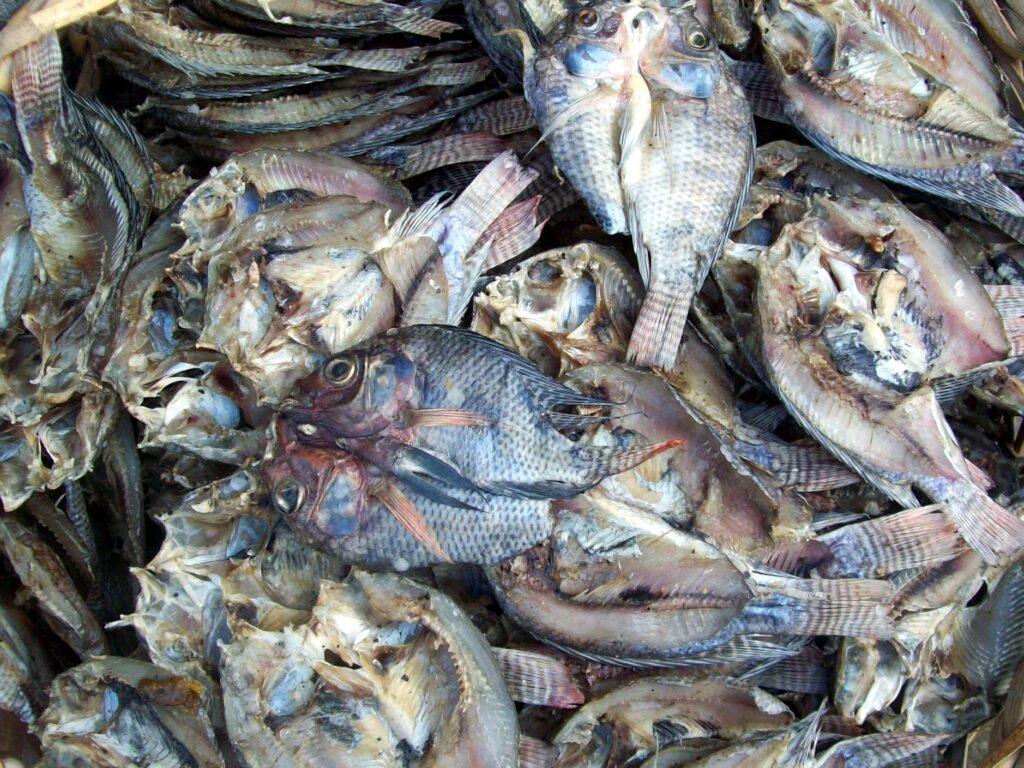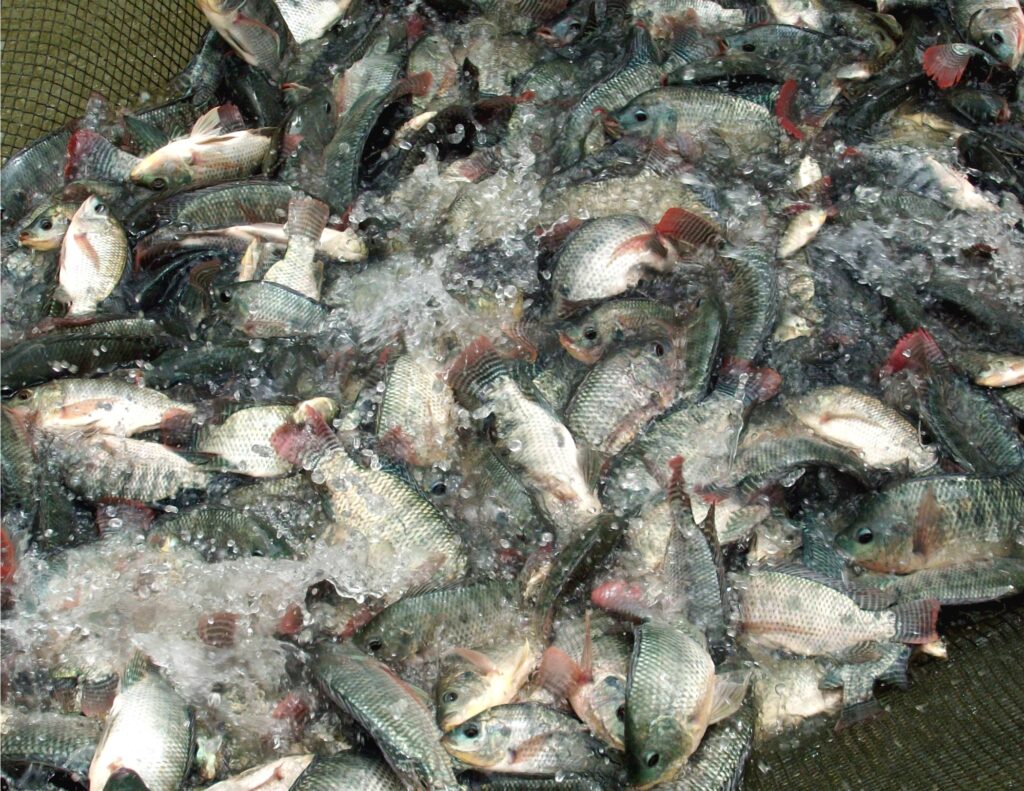Text and Photos by Henrylito D. Tacio
The country’s leading research agency is promoting the raising of tilapia as a possible solution to the problem of fish shortage as the country faces the problem of coronavirus disease 2019 (COVID-19) pandemic.
“The project is designed to improve the capacities of the poor to develop and implement livelihood activities during the post-lockdown period,” said the Laguna-based Philippine Council for Agriculture, Aquatic and Natural Resources Research and Development (PCAARRD).
The project is called “Tilapia para sa Pamayanan,” a component of the GALING-PCAARRD Kontra COVID-19 Program. It was implemented by the Laguna State Polytechnic University in cooperation with the Batangas State University and local government units. The Bureau of Fisheries and Aquatic Resources of the Department of Agriculture served as its main source of tilapia fingerlings.
When COVID-19 hit the Philippines, the government implemented several measures. One of them was to prohibit people from going out from their homes in order for them not to be infected with SARS-CoV-2, the coronavirus that causes COVID-19 and a distant relative of Severe Acute Respiratory Syndrome virus.
During the lockdown, most fishermen were not allowed to go out. As a result, there was a shortage of fish from the open seas being sold in public markets. Most of the fish for sale were those being raised in ponds like bangus and tilapia.
Like rice, fish is the staple food of Filipinos. This gave PCAARRD an idea of setting-up small-scale backyard fishponds for marginalized families to aid them during the COVID-19 pandemic.
For its study, the fishponds were built in some areas in Laguna and Batangas. From each province, ten fisherfolk were selected as cooperators. “By doing so, the project aims to ensure that the poor will be able to address their basic food needs in terms of fish protein requirements,” PCAARRD said.
Among the criteria followed for the selection of beneficiaries were: having 100-400 square meter ponds with enough supply of water the whole year round (either coming from a river, stream, deep well or irrigation canal or from rainfall during the wet season) and willing to undergo fish culture and processing training.
Tilapia was a selected fish species as it is considered the “aquatic chicken” in aquaculture. Besides, the source of fingerlings is not a problem as they are readily available any time of the year.
PCAARRD, in its information bulletin No. 109/2020, said that the project also wanted to promote environment-friendly culture techniques for tilapia farming, specifically on growing the fish in earthen ponds and on the minimal use of commercial feeds.
The bulletin provides step-by-step methods of tilapia grow-out culture in a fishpond. “Tilapia farming in ponds is a very popular method,” it stated. “A pond is a small area of still, fresh water, and no more than 1.8 meter deep.”

Harvesting tilapia 
Dried tilapia 
Caught tilapia
Site preparation: The pond site should be thoroughly cleared of all the trees and bushes, including their roots. No wooden materials should be left because these will rot and cause leaks. The fishpond bottom is sun-dried before the actual start of the culture period.
Pond excavation and dikes construction: The excavation work within the area marked for the pond bottom can be carried out either manually or mechanically. Pond construction becomes economical if earthen dikes are made around the pond using the excavated soil from the pond bed.
Dikes must be well compacted to make them stable, and the top should be flat to render them accessible to small vehicles when needed. It is recommended to grow short, creeping grass on the top and sides of the dike. Trees are not desirable since shade inhibits the productivity of the pond.
Water inlet structure: For small ponds, the best inlet structure is polyvinyl chloride (PVC) pipe of about 10 centimeters in diameter with a control tap and a screen basket. The downstream end of the pipe should be 30-40 centimeters above the water level. A sluice is also suitable for this purpose, especially for larger ponds.
A screen is also fixed to check the entry of undesirable fishes and other aquatic organisms. The pond elevation should be sloped to where the catch basin (a square concrete) is located. This serves as a catch area during pond draining.
Maintenance and repair: Earthen dikes are susceptible to weathering and need a period of inspection. Paying attention to and fixing minor damages regularly helps avoid costly repairs later on.
When repairing gates and screens, check all gates and pipes for broken slabs and parts. Repair screens to prevent predators and pests from entering the pond system. When repairing dikes, check all dikes for leakages and seepages.
Pond preparation: This is the first step towards ensuring better production of tilapias in ponds. The pond bottom should be compacted and leveled.
Pond drying: It is recommended to dry the pond bottom until the soil cracks and until the soil is firm enough to hold one’s weight without sinking. This is to eliminate undesirable species and predators, oxidation of harmful chemical substances, and mineralization of organic matter. It is necessary to remove harmful chemicals, for these will adversely affect tilapia growth and survival.
Pond fertilization: Either inorganic or organic fertilizers such as manure, compost, or even vermicast may be used. The nutrients and organic matter content of manure helps increase the water holding capacity of the soil, decrease the rate of evaporation, and increase enzymatic activity. All of which increase fertility and yield.
Fertilizer application by broadcasting: In applying inorganic fertilizers, it should be dissolved in buckets containing pond water and then splashed over the whole pond surface.
Stocking of fingerlings: The fingerlings are conditioned at least 12-24 hours prior to dispersal. They are placed in hapa-in-concrete holding tanks with no feeding.
Stocking of uniformly sized fingerlings is done before 7 in the morning or after sundown when the water temperature is low. Fingerlings must be properly conditioned or acclimatized for 20 minutes before stocking to minimize stress.
Feeds and feeding: Additional feeds may be needed if plankton growth is not enough and fish growth is slow. Fish growth can be checked by measuring the fishes’ weight during a scheduled sampling. Feeds are broadcast into the pond, usually on the same part of the pond, in order to train the fish to feed. An active feeding response is a good indication of healthy fish.
Sampling: The increase in the fish’s body weight is used as a basis in determining the amount of feeds required. Thus, regular fish weight sampling is recommended. To get a representative population, a case net is thrown to a school of fish attracted by feeding. The bulk weight is recorded, fishes are counted, and the bodyweight is divided by the number of fishes.
Harvesting: The tilapia produce is harvested in about three to four months of culture with supplemental feeding.
“Beyond the pandemic, the project hopes to provide the selected marginalized communities with science and technology (S&T) knowledge that can be passed down from generations and better opportunities and additional income,” said PCAARRD, a line agency of the Department of Science and Technology (DOST).
Even when the pandemic is over, people who are raising tilapia in their backyard ponds can still continue as it is a viable venture.
“Farmers can always sell their surplus tilapia to their neighbors or in the public market,” says Jethro P. Adang, the director of the Mindanao Baptist Rural Life Center (MBRLC), a non-government organization based in Kinuskusan, Bansalan, Davao del Sur.
“Fish is the main source of protein for the Filipino,” he adds.
On average, every Filipino consumes 98.6 grams of fish and fish products each day, a study of the DOST’s Food and Nutrition Research Institute (FNRI) showed.
“Raising tilapia is a win-win situation for farmers,” Adang says. “The family can have their free source of protein and they can have additional income when they sell whatever surplus they have.”
The MBRLC is a good source of tilapia fingerlings. Farmers who want to undergo tilapia culture can also avail the training program it offers. “Our center is open to those who are interested in raising tilapia in their backyards or farms,” Adang says.
But there’s more to tilapia than just providing food. In the United States, tilapias are stocked in the canals that serve as the drinking water sources for the cities of Phoenix, Mesa, and others. The fish reportedly help purify the water by consuming vegetation and detritus, thus greatly reducing purification costs.
Tilapia also serves as a natural, biological control for most aquatic plant problems. Tilapia consumes floating aquatic plants, such as duckweed watermeal, the most “undesirable” submerged plants, and most forms of algae.
In Thailand, tilapia is becoming the plant control method of choice in reducing, if not eliminating, the use of toxic chemicals and heavy metal-based algaecides. In Kenya, tilapia helps control malaria-causing mosquitoes. Tilapia consumes mosquito larvae, which reduces the numbers of adult females, the disease’s vector.

